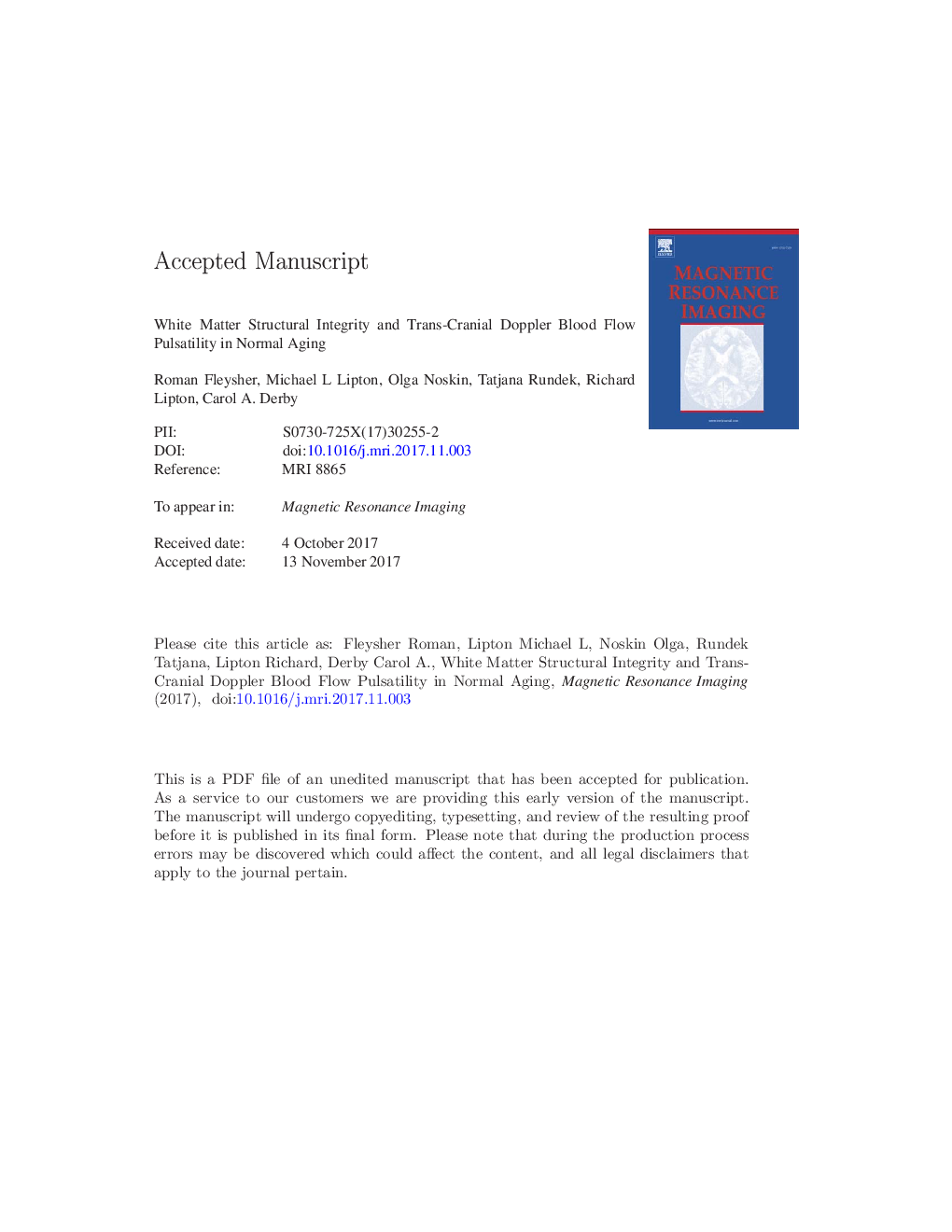| Article ID | Journal | Published Year | Pages | File Type |
|---|---|---|---|---|
| 8159975 | Magnetic Resonance Imaging | 2018 | 24 Pages |
Abstract
Cerebrovascular diseases underlie many forms of age-related cognitive impairment and the mechanism linking the two is hypothesized to involve adverse changes in white matter (WM) integrity. Despite being systemic, small vessel disease does not uniformly affect WM. We performed voxel-wise analysis of MRI images to examine the association between fractional anisotropy (FA) - a diffusion tensor measure of WM structural integrity - and pulsatility index (PI) - a transcranial Doppler ultrasound measure of abnormal arterial flow - in adults over the age of 70Â years who were free of stroke and dementia. We demonstrate that the relation of PI to microstructural changes in WM is artery specific and regional. We identified spatial clusters of significant correlations between elevated PI and reduced FA which cannot be explained by aging, supporting a vascular hypothesis of WM injury. These areas are not limited to the vascular territories of the vessels where PI is assessed, suggesting that the linkage between PI and FA is not likely a function of perfusion per se, but is consistent with injury caused by mechanical wave emanating from pulsating vessel walls.
Related Topics
Physical Sciences and Engineering
Physics and Astronomy
Condensed Matter Physics
Authors
Roman Fleysher, Michael L Lipton, Olga Noskin, Tatjana Rundek, Richard Lipton, Carol A. Derby,
